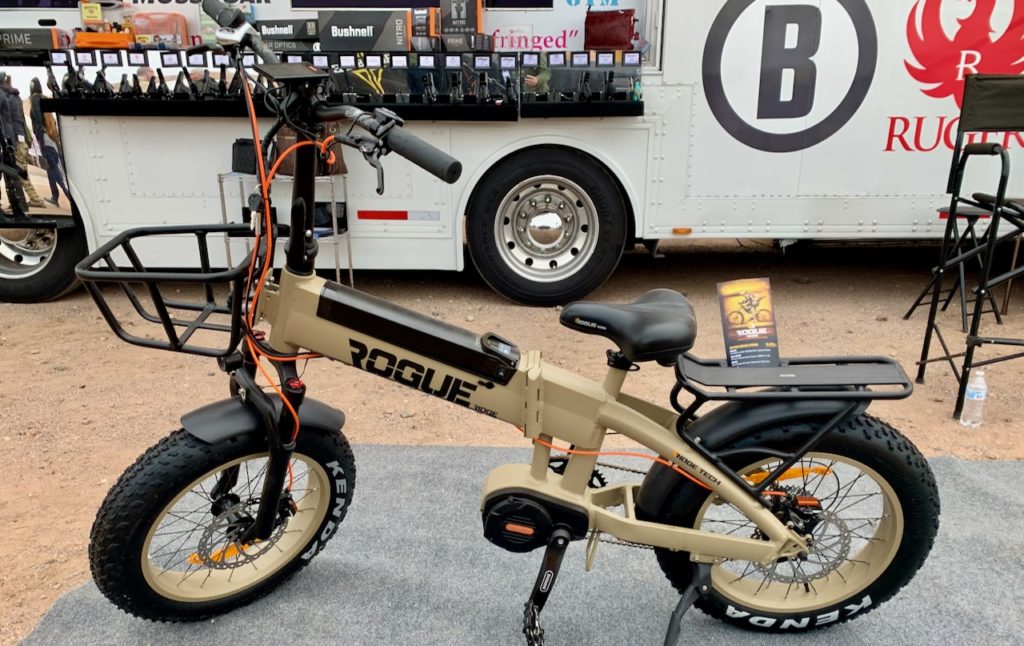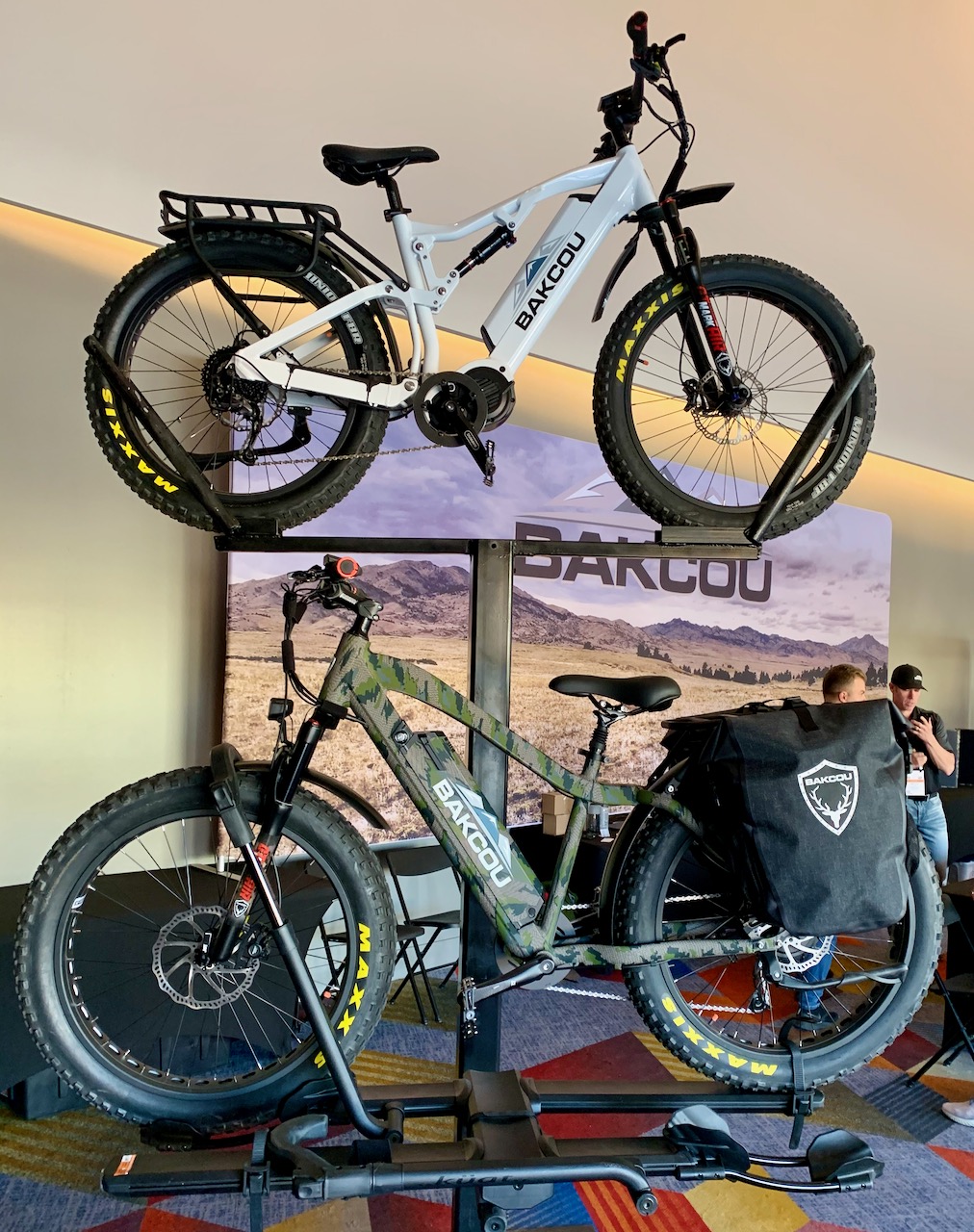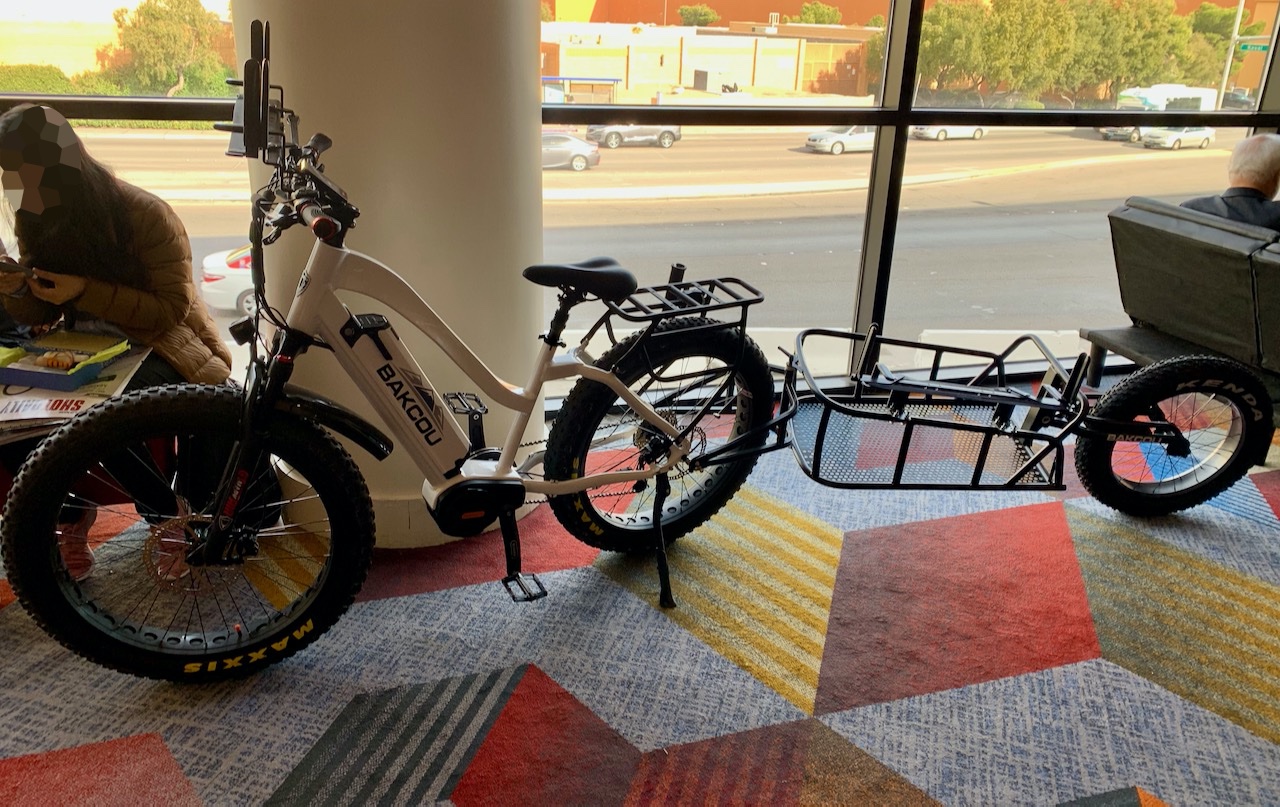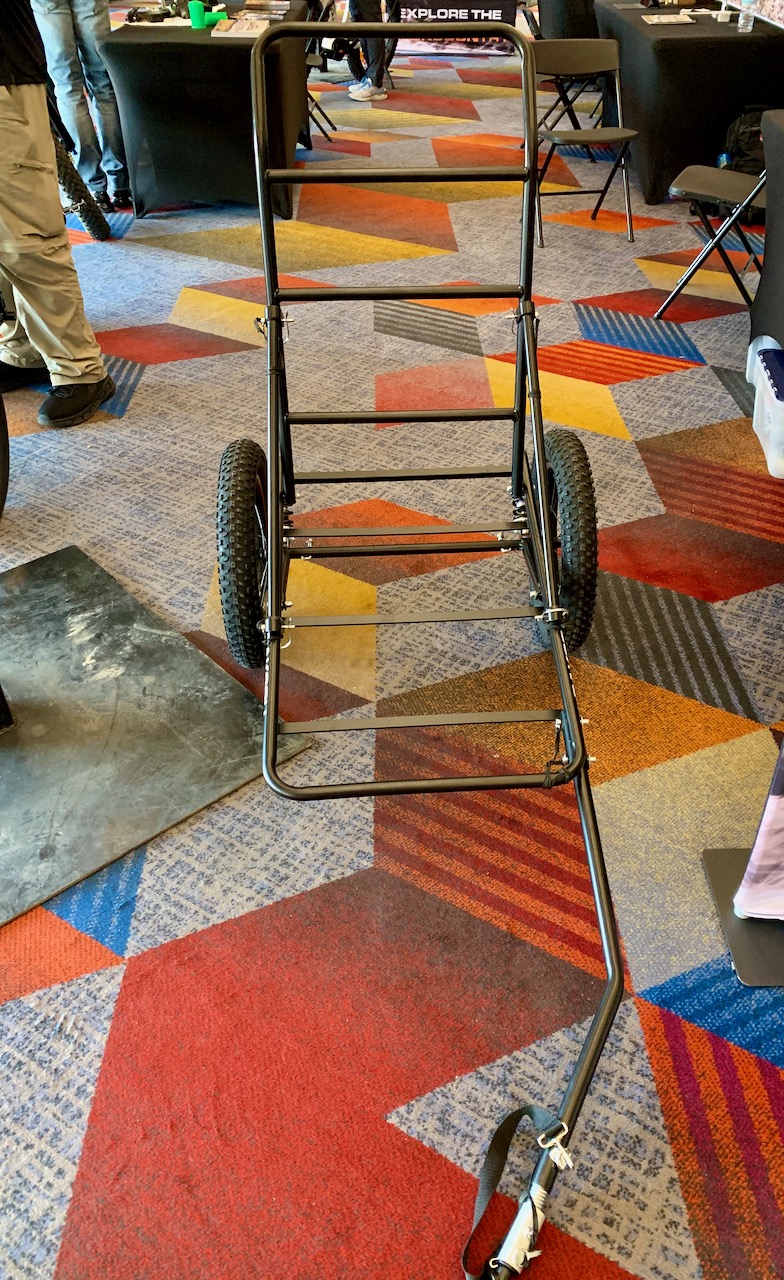This is my sixth year at SHOT Show in Las Vegas, Nevada, and this is the first time I’ve seen an entirely new product category crop up, here: the hunting e-bike.
These new additions to the show floor are ultra-tough mountain bikes with lithium-powered electronic motors — 750W or 1000W — that use microprocessors and sensors to offer assisted pedaling for cruising, hauling, or towing. Basic idea is that you can stealthily ride one of these bikes into the woods to hunt without scaring off the critters, and then pack your dead animal back out on the same bike.
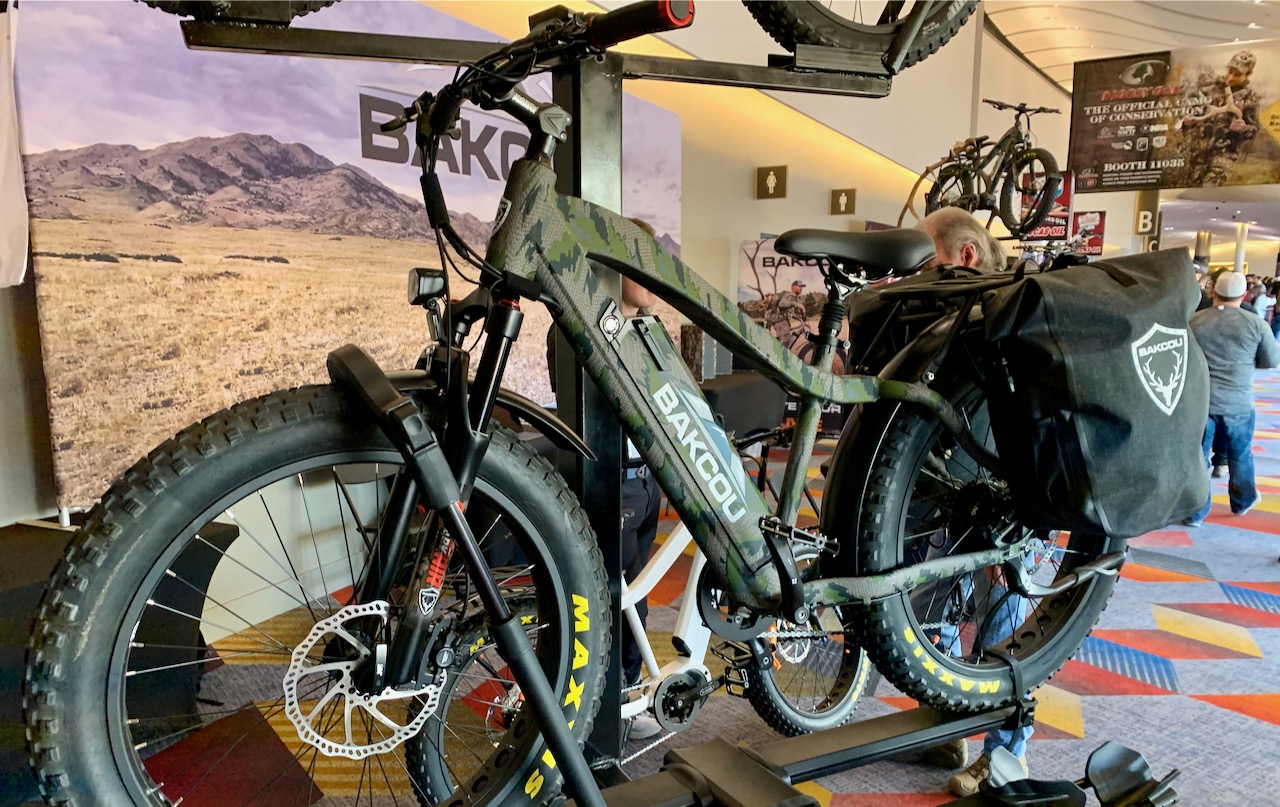
I had a sit-down with Salt Lake City-based BAKCOU rep Dean Stokes (sadly, we don’t appear to be related), and he helped me get my head around this product category and market, which is still fairly small. Here are the highlights:
Some bikes have a motor on the rear wheel, while others have the motor mounted in the middle of the frame. The latter configuration, called a mid-drive motor, provides more torque than the former and is designed for climbing and pulling.
The BAKCOU bikes are nine-speed mountain bikes with pedal assist and a throttle. If you’re pedaling along with the motor (pedal assist), you can get from ten to as much as fifty miles, depending on the terrain and how much you’re helping the bike out. If you’re not pedaling and using the throttle, range is three to five miles.
You don’t actually have to use the battery or motor, and can just ride it like a (really heavy) mountain bike.
Some configs have front suspension, others have full suspension.
Prices for the BAKCOU models start at around $4,000 and go north of $5,000. One other model I saw on the floor, the Rogue, goes for north of $6,000.
BAKCOU offers a solar kit for going off-grid. The bike charges in 4-5 hours via 110 outlet, or roughly the same time if you have enough sunlight with the solar kit.
Some areas in the backcountry have restrictions on powered transportation, so you can turn down the wattage in order to comply.
The little screen on the front (all these bikes have them) let you control the motor, check battery levels, and generally configure the bike and get feedback.
The BAKCOU bikes can tell if you’re pedaling or not, and will adjust accordingly — if you stop pedaling, they stop assisting you so that you can roll down a hill unpowered. With some bikes, if you turn on the assistance they keep going unless you turn it off.
The different bikes from different brands offer a range of accessories — baskets, packs, and trailers in different configurations.
This whole product category is about five years old, so is fairly new. The rep estimates that are probably less than ten thousand of these mountain e-bikes bikes in the hands of customers right now, but the market is growing.
There are around three makers at the higher end of this category, and then a handful a bit further down.
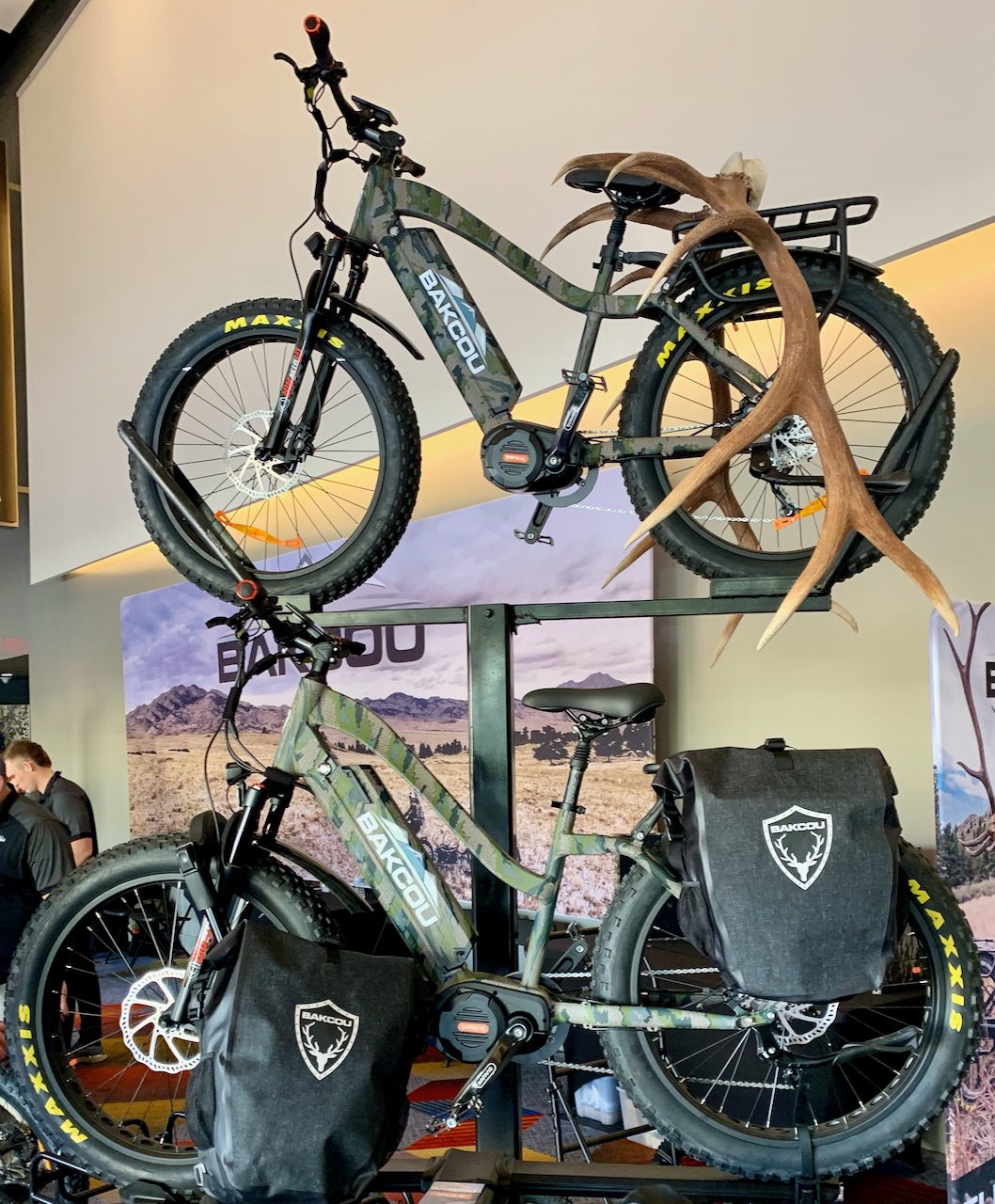
E-bikes as a bug-out option?
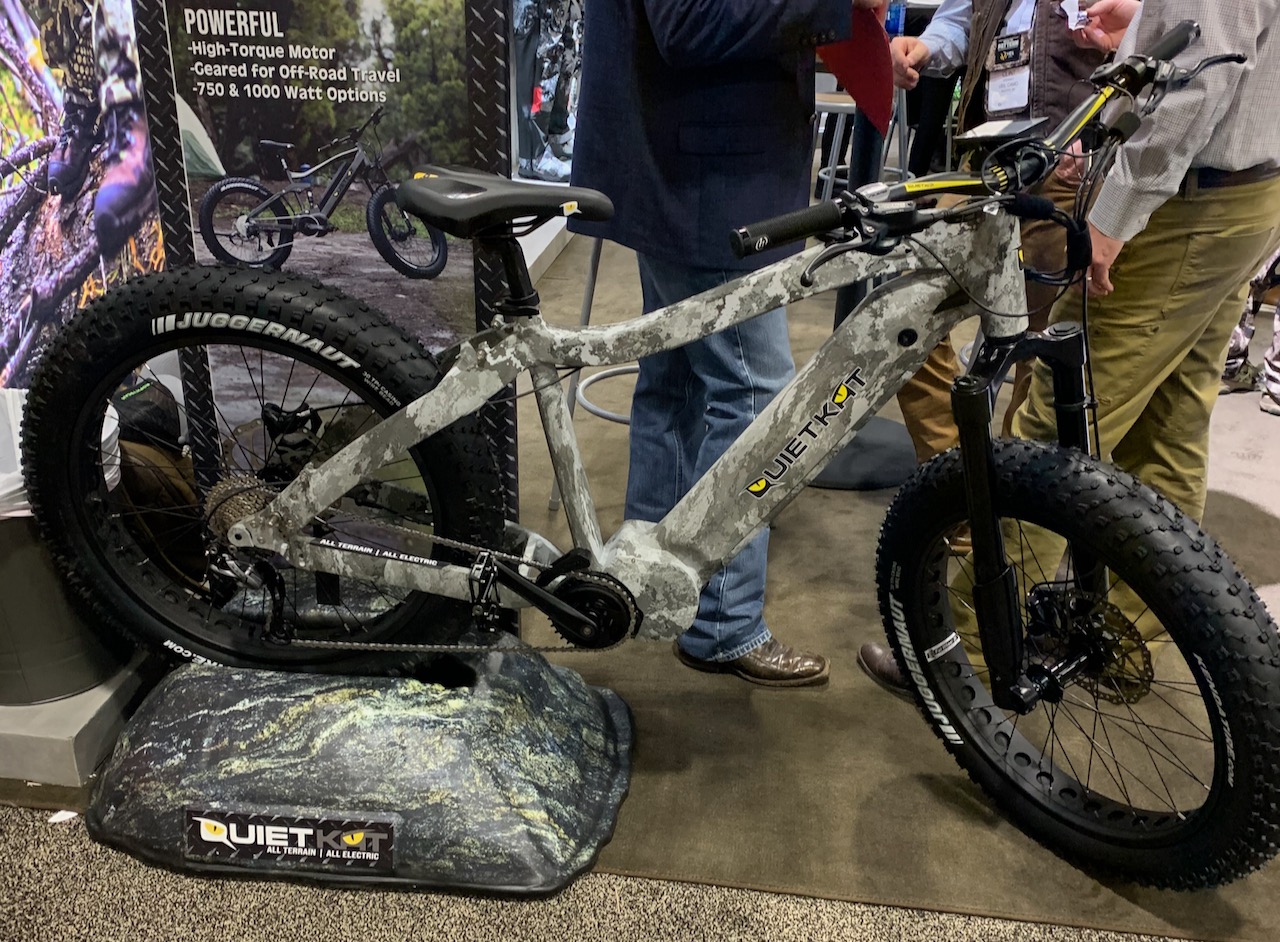
As lithium-ion battery tech matures and increases in energy density, this type of bike will look increasingly attractive as fossil-fuel-free, renewable-energy-based powered transport option for bug-out in a grid-down.
Right now, the price of entry is way too high for most preppers, but as the market grows prices will come down and these types of ultra-rugged, all-terrain e-bikes will start to creep into the category of “expensive preps, but potentially worth it.”
As long-term grid-down preps, the e-bike’s bikes’ prospects are iffy. They’re fairly complex, and will always be so. So as cool as the solar recharge option is, I wouldn’t count on running such a bike for too many years after the oil dries up. Tires are an obvious wear part, but there’s a motor, battery, and electronics on-board that all can and will break at some point.
But in a crisis, the gas lines grow very quickly, and your entire geographic area can be out of gas pretty quickly. In such a scenario, this could make for a solid bug-out alternative, especially given that you’d likely be running it on flat roads with pedal assist, which would give you a powered range in the tens of miles.

